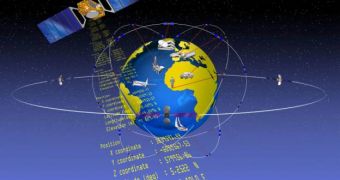For centuries, navigation by ships has depended on clocks. Sailors have depended on latitude and longitude measurements and although altitude is fairly easy to determine through celestial navigation, the measurement of longitude requires accurate measurement of time.
This need was a major motivation for the development of accurate mechanical clocks and it's still a very important one in modern space navigation.
Galileo, Europe's twenty-first century navigation system, also relies on clocks - but they are millions of times more accurate than those earlier timepieces. The two operational satellites rely on atomic clocks.
Both of them carry two kinds of clocks, each one having two passive hydrogen masers and rubidium atomic frequency standards. The masers (devices that produce coherent electromagnetic waves through amplification due to stimulated emission) will be the primary reference for generating the navigation signals, with the rubidium atomic clocks acting as a cold (non-operating) spare.
The first Galileo in-orbit verification satellite, GIOVE-A, is already operational and has two rubidium clocks, the second being a cold spare. His brother, scheduled to be launched later this year, will have one hydrogen maser and two rubidium clocks, working on the same spare principle.
There will be another satellite programmed for launch in the second half of 2008, with similar timepieces, but featuring some additional navigation signals.
The hydrogen masers are able to measure time with an accuracy of around one nanosecond (one one-thousand-millionth of a second) in 24 hours. Like most other atomic clocks, they are the most precise method ever developed, with an error on plus or minus 1 second every 2.7 million years.
Most commercial wristwatches based on quartz, have an accuracy of around one second per day, so Galileo's atomic heart is one billion times more accurate than your average wristwatch.

 14 DAY TRIAL //
14 DAY TRIAL //